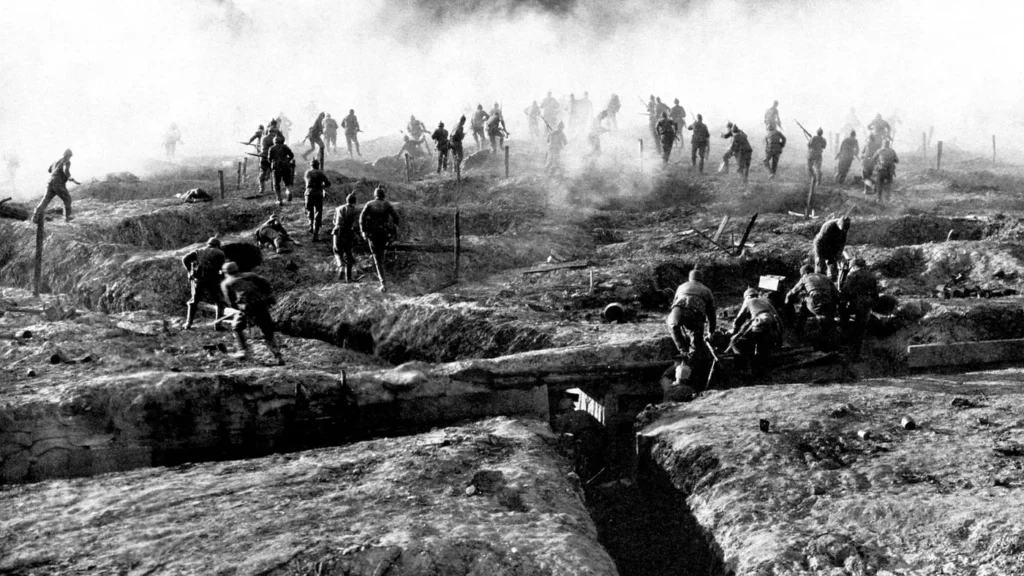Introduction
One of the defining features of the two World Wars in the 20th century is the shifting of borders. New nations emerged – Saudi Arabia, Israel, and Pakistan being notable examples – and borders underwent alterations over time – East Pakistan, South Sudan, Kashmir, and Palestine are examples. The abrupt departure of the pre-war imperial power, Great Britain, from its colonies left a political and, at times, administrative void in its wake, often paving the way for various non-political and non-state entities – TTP, ISIS, and successive military regimes in former colonies are examples. This too became an ever-returning phenomenon in the former colonies.
Historical Context: A Prelude to Conflict
The First World War brought down the Ottoman Empire, which provided the then colonial power, Great Britain, the opportunity to define the borders of the Middle East and promised the Jews a state in Ottoman-controlled Palestine in return for their support in the War under the Balfour Declaration of 1917. In the aftermath of the Second World War, the state of Israel was created in 1948, under the patronage of the United States, which then took over the role of the superpower from Great Britain. This left the Middle East in a permanent state of instability and turmoil; whereas in Europe, the Second World War left Nazi Germany divided by erecting the Berlin Wall. West Germany aligned with the capitalist-liberal West, and East Germany came under the influence of Communist East under the leadership of the USSR – a scenario that culminated in the Cold War. The Berlin Wall came down in 1989, and consequently, the reunification of Germany took place, signifying the end of the Cold War. In Eastern Europe, the communist powers, USSR, Czechoslovakia, and Yugoslavia disintegrated.
Current Geopolitical Dynamics
This brief historical context is essential for comprehending the ongoing situation towards the west of Pakistan, alongside the enduring standoff with India in the east. There are two main war zones towards the west of Pakistan: Israel-Palestine war and Russia-Ukraine war. Both have their origins in the two World Wars of the 20th century. Let’s put our focus on the situation beyond our western borders in this article, where the Great War started over a century ago and has moved into phase 3 – the Third World War.
The Russia-Ukraine Conflict: A New Chapter in an Old Saga
After the reunification of Germany and the end of the Cold War in 1991, an agreement took place between the former USSR and the US-led West. It was agreed that the countries that were created after the disintegration of the former communist bloc, particularly the USSR, shall not be granted membership of NATO. This agreement was gradually breached by the West. At that time, the Russian Republic was economically too weak to respond to these developments which it looked at with dismay and distress. Things nevertheless changed since Vladimir Putin became the president in May 2000. He revived the Russian economy and started to flex his military muscles at the same time. A visible manifestation of Russian comeback as a significant world power was the annexation of Crimea in May 2014. The heat built up further when Ukraine, Russia’s neighbouring state, reiterated her desire for the membership of NATO – despite Russian opposition and warnings. Ukraine had aspirations to become a NATO member since it gained independence in 1989 when the “Allies agreed at the 2008 Bucharest Summit that Ukraine will become a member of NATO.” The Crimea episode led the Ukrainian parliament to adopt a resolution, urging the NATO leaders to grant it full membership status anticipating Russian aggression. This ironically led to the Russian invasion of Ukraine on 24 February 2022.
The Israel-Palestine Conflict: An Endless Struggle
The situation in Gaza is far from favourable for the Israeli Defence Forces (IDF). From the Hamas’ guerrilla warfare point of view, not being defeated equates victory, and from the Israeli point of view, not being able to eliminate Hamas would mean defeat. As the reports suggest, the IDF appears ineffective against the Hamas fighter in Gaza, and a prolonged conflict would mean huge casualties of its troops in Gaza. Therefore, it is not unlikely that Israel is compelled to use nuclear weapons in Gaza to conclude this war according to their definition of victory – total annihilation of Hamas.
Conclusion: Toward an Uncertain Future
It is evident from this summary of events that the Great War, which began at the outset of the 20th century, continues to linger and manifest in different forms and shapes in various theatres around the world. This leaves us with a tantalizing question – how shall this finally conclude? How shall total victory be defined in these wars? Is it to entail the complete obliteration of the adversary? Does it imply the eradication of an entire populace, or rather, a complete and utter humiliation of surrender? If so, such objectives are unattainable, at least between India and Pakistan, or indeed, between any two nuclear-armed nations. By dint of this definition that is not the case with the Russia-Ukraine war; nor with the Israel-Palestine conflict. In both these situations, only one party is armed with nuclear weapons. Meaning, that in a severe eventuality, one of the warring parties holds the decisive weapon to end the war. And it is not unlikely that it might happen.
